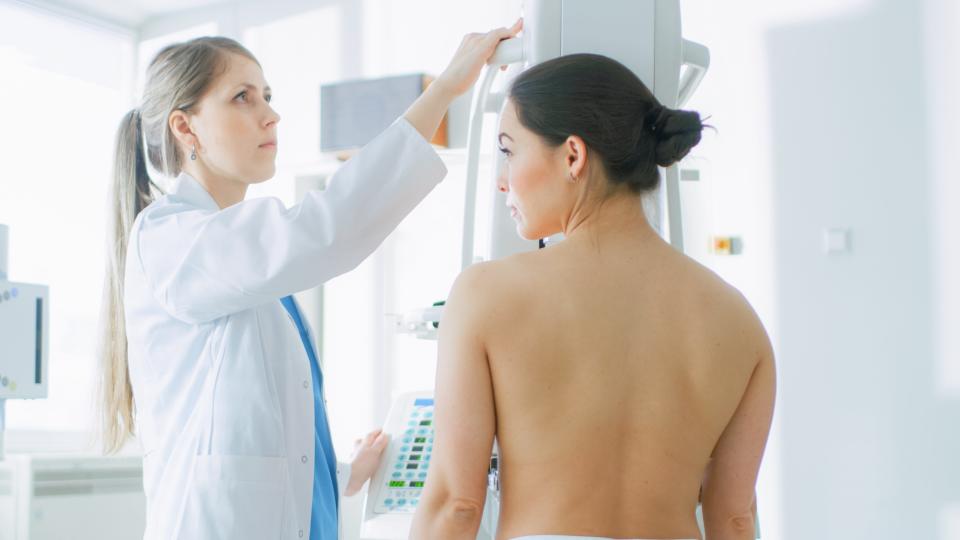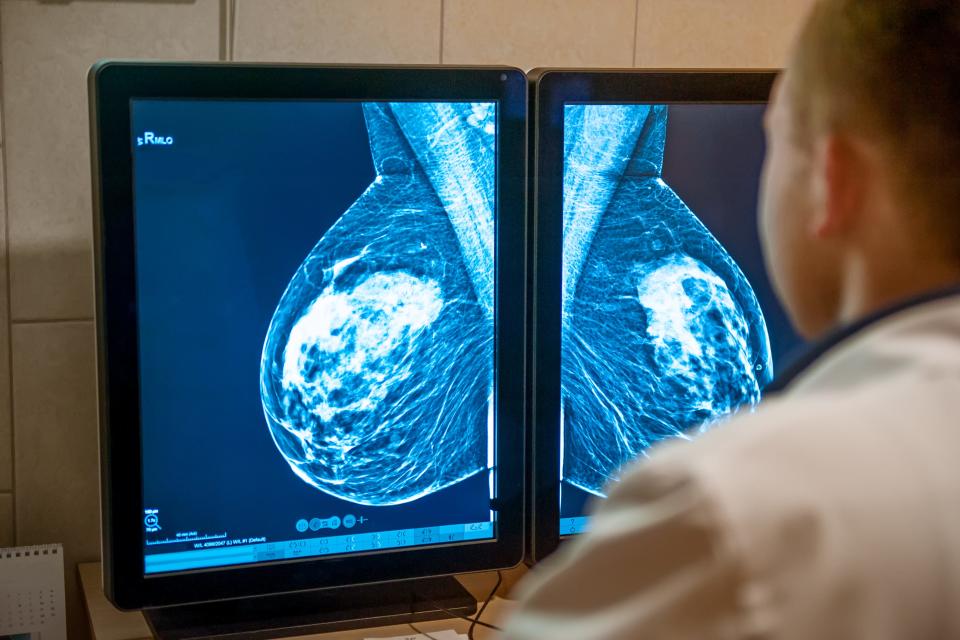When should you get a mammogram? Austin doctors explain breast cancer screening guidelines
The new breast cancer screening guidelines from the U.S. Preventive Services Task Force might be confusing if you are person with breasts between ages 40 and 49. While the task force recommended screenings start at 40 instead of 50 with the option to start at 40, it recommended an every-other-year mammogram instead of an annual one. The task force is generally considered the authority on screening recommendations.
Those recommendations are different from the American College of Obstetricians and Gynecologists, which recommends annual or every-other-year screenings based on a conversation between the patient and doctor starting at age 40, and the American Cancer Society, which advocates for the option of annual screenings at age 40 but definitely annual screening beginning at 45. Then at age 55, a person can continue the annual screenings or opt for every-other-year screenings.

Recommendations on when to stop annual mammograms are even more confusing. The American Cancer Society recommends continuing mammograms as long as a person is healthy and expected to live another 10 years or more. The task force is asking for more data and research into this question. The doctor's association recommends screenings through age 75. The doctors' association recommends through age 75 and then a shared decision-making process based on a patient's health and expected longevity.
We asked local doctors to help us sort out these recommendations.
What is the advantage of starting mammograms at age 40?
Starting mammograms at age 40 can be emotional. "It hits people," said Dr. Allison Devine, an obstetrician and gynecologist with Austin Diagnostic Clinic. "It's the first introduction into a discussion about perimenopause."
While ages 50-64 are the most common ages for a woman diagnosed with breast cancer, the risk of a breast cancer diagnosis begin to increase at age 40. Moving the guidelines to age 40 can increase the survival rate by 19%, the task force cited.
"If you start at age 50, you're preventing a lot of women from getting the screening they need and finding early breast cancer," said Dr. Brett Deatherage, a radiologist at Ascension Texas Imaging in Kyle.
Cancer caught in an earlier stage means a less invasive surgery, less recovery time and the possibility of not needing additional treatment like chemotherapy or radiation.
A lot of the breast cancer found in peoples ages 40 to 49 is in the beginning stages. Other breast cancers found in this age group might be more aggressive and fast-growing.
Devine has had no issues getting insurance to cover an annual mammogram for women in their 40s.

Should I do a mammogram every year or every other year?
Devine follows the association's guidelines and has a conversation with her patients, but she does encourage getting mammograms every year beginning at age 40.
"I've seen plenty of women go from a completely normal mammogram without any need for follow-up testing and then the next year, they have breast cancer," Devine said.
Getting on an annual schedule also makes people more likely to get a mammogram every year rather than forgetting if this was their year or not, she said.
Dr. Julie Sprunt, a breast surgeon with Texas Breast Specialists, also encourages annual mammograms. "If we look at breasts every year, we find things earlier," she said.
That could be calcifications, which could become cancer, or a cancer being found when it is still contained or when it is ductal carcinoma in situ. Typically treatment for DCIS and breast cancer that has not spread is just a surgical removal of the cancer with no chemotherapy and no lymph nodes needing to be removed, Sprunt said.
Earlier and more frequent mammography gives radiologists like Deatherage more past mammograms to compare against the current mammograms. Using 3-D mammography with artificial intelligence called computer assisted detection can help alert radiologists of suspicious areas they might not see and can help see changes from previous mammograms.
Read more: Will you get breast cancer in five years? Austin-based Clairity working on predictive tech
Are there any disadvantages to starting mammograms at age 40?
In this age range, it's more common to get a call back for an additional screening and then find nothing of worry. Those call backs, in which an additional mammogram is done as well as an ultrasound, can be incredibly stressful.
More women in their 40s have dense breast tissue, which can increase the call-back rates. Having a 3-D mammogram instead of a 2-D can help reduce the number of call backs because it allows the radiologist to better see a tumor through the dense breasts.
New FDA guidelines require mammogram reports to let patients know whether they have a dense breast pattern.
People who are pregnant in their 40s should skip the mammogram while pregnant. If they know they are going to get pregnant, they can do one before the pregnancy begins.
Are there people who should start mammograms earlier?
The guidelines are based on the average risk for women, Devine said. "A lot of things can increase a person's risk. That includes family history, genetics and ethnicity. Women of Eastern European Jewish descent and African Americans have an increased risk.
The conversation about breast cancer risk should begin when a woman is in her late 20s or early 30s, if not before, Devine said.
Anyone who has a family history of breast cancer should begin screening mammograms 10 years before that family member was diagnosed. So, if someone has an aunt, mother, sister or grandmother with breast cancer diagnosed at age 45, they need to be screened at age 35.
Read more: Writing back to cancer: One woman's messages inspire following
What happens if I get a call back for additional screening?
Getting called back does not mean you have cancer, Deatherage said. It just means there is something on your mammogram that the radiologist wasn't sure about or they didn't get enough imaging. "It most cases, it will not be a breast cancer," he said.
What can I do to make a mammogram less painful?
The squish isn't fun. Devine encourages people who've had a bad experience to go somewhere else. "A lot depends on the tech," she said.
Also a mammogram can be more painful just before or during menstruation.
If someone really doesn't want a mammogram, Devine might order an ultrasound, which can find a mass, but not the calcifications of early breast cancer. "Some screening is better than no screening," she said.
What else should I do other than get a mammogram?
Of course, anyone with breasts can get breast cancer, including men, who don't have screening guidelines.
Like many cancers, breast cancer rates increase with other health factor risks like obesity and alcohol use. Regular exercise, a diet with lean protein, fruits and vegetables and low on processed foods can help. Breast feeding also reduces the risk.
While the vast majority of people in whom Deatherage finds a suspected breast cancer on their mammogram are older than 40, "Sometimes I see women in their 30s that have no family history," he said.
Beginning at age 20, women should do monthly breast checks, preferably on the same time of the month after your menstrual cycle. Do that screening both standing up and sitting down. Breast checks help you know what your breasts feel like normally, making it more likely you'll feel when something has changed, Sprunt said.
"Many women in their 40s pick up their own breast cancer in the interim between mammograms," Devine said.
This article originally appeared on Austin American-Statesman: Austin area doctors explain new breast cancer screening guidelines

